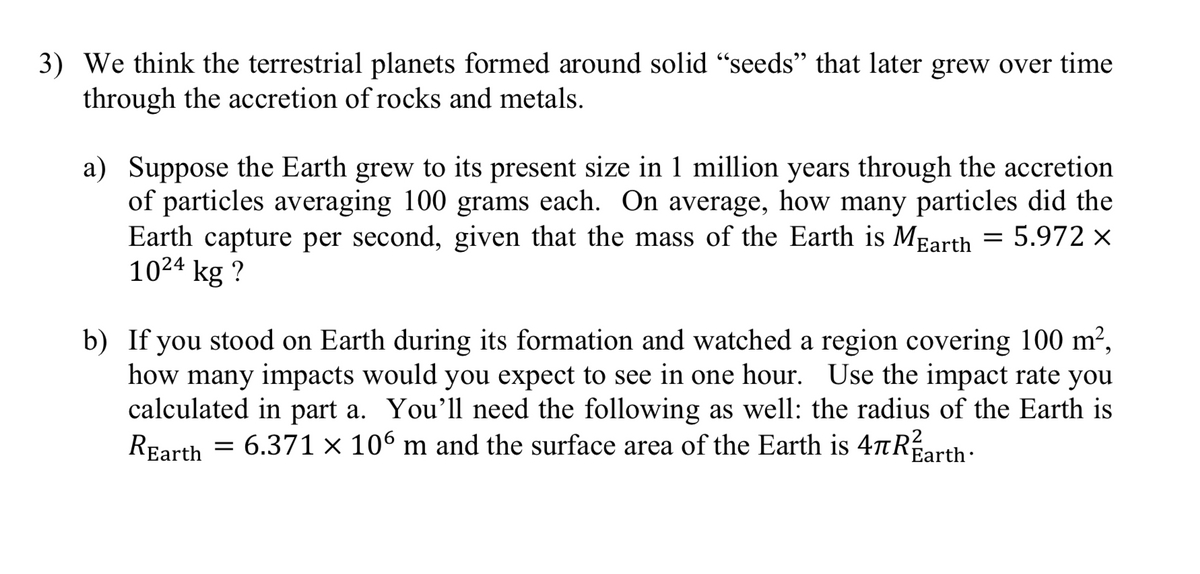a) Suppose the Earth grew to its present size in 1 million years through the accretion of particles averaging 100 grams each. On average, how many particles did the Earth capture per second, given that the mass of the Earth is = 5.972 × 10 ^24 kg ?
-
We think the terrestrial planets formed around solid “seeds” that later grew over time through the accretion of rocks and metals.
-
a) Suppose the Earth grew to its present size in 1 million years through the accretion of particles averaging 100 grams each. On average, how many particles did the Earth capture per second, given that the mass of the Earth is = 5.972 × 10 ^24 kg ?
-
b) If you stood on Earth during its formation and watched a region covering 100 m^2, how many impacts would you expect to see in one hour. Use the impact rate you calculated in part a. You’ll need the following as well: the radius of the Earth is = 6.371 × 10 ^6 m and the surface area of the Earth is 4??^2Earth
-

Trending now
This is a popular solution!
Step by step
Solved in 2 steps









